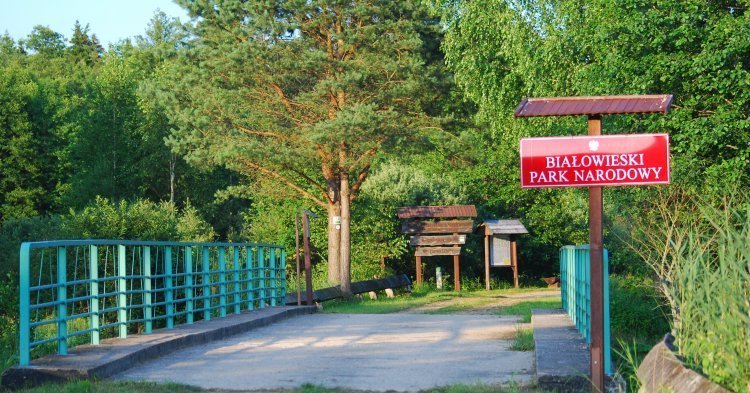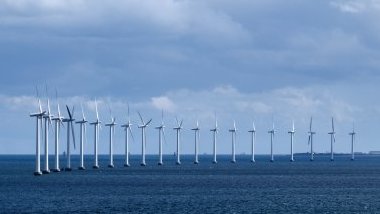A primary forest, also termed virgin forest or old-growth forest, is a forest which is almost untouched by humans, or where the human interventions happened long ago or are limited to a very small extent. Białowieża is an exemplary primary forest since it formed 10 000 years ago, during the last glacial period, and the human interventions were up to now quite moderate. Famous for its 600 wild European bisons, it is also home to lynxes, wolves, various rare species of owls, and many other insects and plants.
Protected for centuries, this forest formerly was a hunting ground for Polish kings and Russian tsars. In 1921, the government of the young Polish Republic made Białowieża one of the first natural parks in Europe. In 1932, it was declared a national park. In 1945, the forest was split in two parts: one part remained Polish while the other becomes Belarusian. The Polish part of the last primary forest of the European plain was declared a UNECSO World Heritage site in 1977.
In 2008, the Białowieża forest was declared a Natura 2000 classified site, four years after Poland’s accession to the EU, whereby the country became subject to the European legislation concerning the environmental protection. Poland’s entry into the European Union considerably changed the forest’s maintenance and management, to the point that the CJEU had to resolve a litigation between the two parties. In order to understand the legal dispute between the Polish authorities and the European Union, it is important to examine how forest management is treated in Polish law and how the European law interposes.
Environment: when national law goes against European law
Forest management in Poland is governed by a law from 1991, the “Forest Act”, establishing that national forests, administered by the State Forests agency, are managed according to a Management Plan made by the agency with the approval of the Environment Minister. This approval consists in a permission for a limited number of tree cuttings given by the Ministry to the State Forests, but is not an administrative act as such. It means that no administrative court has power over the decision. This aspect of the Polish law is particularly important since around 30% of the Polish territory is covered with forests and 80% of these forests are managed by State Forests. It means that around one quarter of the Polish territory is managed without the civil society able to have a say on the matter.
In the case of Białowieża, this legal act goes against European law. Indeed, the forest was declared a Natura 2000 site, and as a result, the number of tree felling had to be strongly reduced so as not to violate European law. The limitation on tree felling was initiated by the intervention of the European Commission against the wishes of the Polish Environment Minister at the time. This was then established in the 2012-2021 Management Plan, under the government of Donald Tusk (today President of the European Council). Nevertheless, in 2015, the Law and Justice (PiS) party won the elections. At the same time, State Forests had already reached the tree felling limitation which was determined for the 2012-2021 period in Białowieża. Yet, the new Environment Minister gave his permission to increase the number of authorised tree felling via an annex to the 2012 Management Plan.
Tug-of-war between the Polish government and environmental NGOs
It is important to clarify the reasons which led to the Minister acting in this way: Jan Szysko is a former forester, and a hunter. He considers that human interventions are necessary for the preservation of the forest. During a conference held in 2016 in Białowieża, in the presence of European Commission’s representatives, the Minister stated that the recent plague of bark beetles (a parasite insect) was ravaging the forest’s spruces which, according to him, could only be saved by pruning and felling sick trees. Facing the opposition of most involved scientists, the Minister defended himself by presenting a plan proposing a division of the forest between zones being left “free” and zones maintained by the State Forests, in order to investigate which forestry strategy would achieve a better maintenance of the forest.
According to environmental NGOs and some scientists, this plan could only lead to negative consequences for the forest, because cutting and removing dead trees threatened some protected species. From a scientific point of view, this plan and the annex of the Management Plan only had negative effects for the forest. From a legal perspective, European law should be applied since the site is a Natura 2000 site. Unfortunately, the Polish authorities didn’t seem to observe the law.
Indeed, before taking any decision on forest management in this Natura 2000 site, the Polish government should have evaluated the impacts of an increase of deforestation in Białowieża. One study was conducted, but it was sparsely detailed and did not meet the requirements of European law. Thus, the decision of the Polish minister was illegal. That’s why, in April 2016, a coalition of NGOs (among which Client Earth, Greenpeace and Birdlife) sent a letter asking the European Commission to intervene. The Commission thus initiated a classic infringement procedure against the Polish government, denouncing both the illegality of the annex to the Management Plan which was signed by the Environment Minister, and stating its concerns regarding the ecological impact of Białowieża’s deforestation.
Another litigation between Poland and the European institutions
Whilst the Polish authorities ignored the Commission’s warnings in 2016, the State Forests started the tree felling in Białowieża. Ultimately, the Commission filed a complaint before the CJEU in July 2017. Initially, the CJEU considered the case through an emergency procedure. In July, a first temporary judgement was given, which instructs Poland to cease the tree felling. However, Poland ignored the injunction. Therefore, for the first time in the history of the CJEU, the Commission asked the Court for a new temporary order, this time threatening Poland with financial sanctions, in November 2017. A few days later, the tree felling stopped, the machines were removed from the forest and the PiS started a cabinet reshuffle, notably replacing the Environment Minister.
The case of the Białowieża forest is particularly interesting for several reasons. Firstly, it is about yet another litigation between Poland’s PiS and the European institutions. Secondly, the case allowed the Commission and the environmental NGOs to prove that the directives of environmental protection established by the Natura 2000 network were effective. Finally, the European institutions demonstrated not only their importance in terms of environmental protection, but also regarding the respect of the rule of law in the EU member states. Indeed, the Polish citizens had no means at the national level to defend the forest, and the European Union established itself as the only solution.







Follow the comments: |
|
